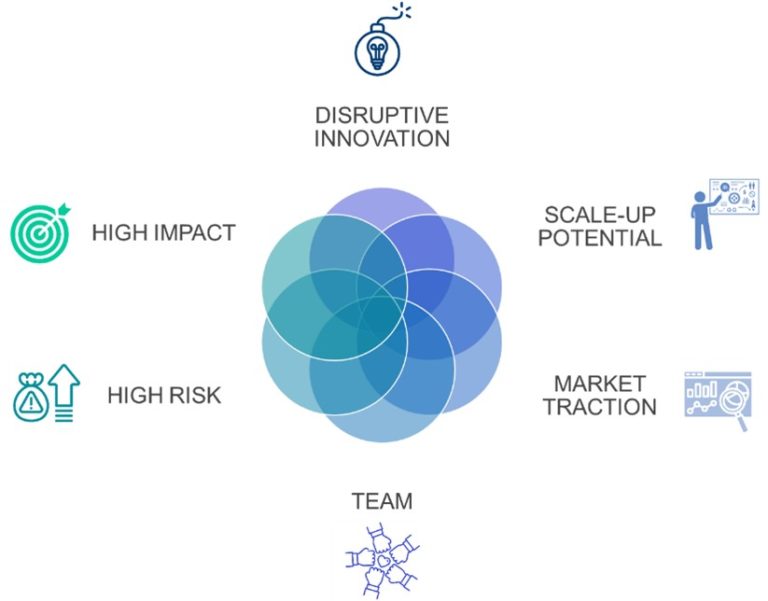
Space & defence: enhancing dual-use satellite technologies in EDF 2025
Space & defence: enhancing dual-use satellite technologies in EDF 2025 David García ArrateSettings The European Defence Fund (EDF) 2025 continues to drive innovation in space
Innovation is the lifeblood of progress, and nowhere is this more evident than in the European Union’s ongoing efforts to establish itself as a global leader in research and development. The European Innovation Council (EIC) is a crucial component of this strategy, providing funding and support to the most innovative and forward-thinking businesses and entrepreneurs.
The EIC was established with the aim of bringing together the most innovative companies and entrepreneurs in the EU, supporting them through funding, networking, and other services. With a total budget of €10.1 billion, it operates through a variety of programs and initiatives, the most notable of which is the EIC Accelerator.
The EIC Accelerator is aimed at startups and SMEs (small and medium-sized enterprises) that have a highly innovative product or service with the potential to disrupt an existing market or create a new one. In particular, companies that are tackling major challenges and opportunities with innovative and high-impact solutions, and have the potential to create significant economic and societal value. In 2023, there were 7 targeted challenges within key strategic areas, described in detail in this article. In 2024, a new set of thematic priorities has been defined in the following areas:
The maximum grant amount for innovation activities (TRL 5 to 8) is €2.5 million, with an additional possibility for equity investment of up to €15 million for market deployment actions.
In 2024, there are two funding options available: blended finance and grant only.
The EIC Accelerator is indeed one of Europe’s most competitive funding programmes, with an average success rate of only 8%. It received over 6728 applications during the calls that were conducted in the period of 2021-23, with only 521 companies ultimately funded.
Projects across a wide range of topics and industries are eligible to apply. However, some areas have historically been a priority and received the most funding from the programme, mainly in the areas of healthcare, engineering and technology, energy, biotechnology, and ICT.
It is important to note that success in the programme is not solely determined by the statistics, as each application is evaluated on its own merit based on the criteria and funding priorities set by the European Commission.



While the EIC Accelerator is highly competitive, there are several factors that can increase a company’s chances of success.
Disruptive innovations with high impact that build on scientific discovery, radical thinking, or technological breakthroughs (“deep tech”) with the potential to disrupt existing markets or create new ones. Companies need to have a truly unique and compelling innovation that sets them apart from competitors.
High-risk projects that face significant technical and commercial uncertainties. While it may hold great potential for impact, bringing it to market will require sustained innovation activities (spanning from TRL5 to 8) and significant funding over an extended period. For that reason, it is still too risky for private investors alone.
A clear and compelling business plan that outlines the market potential for the product or service, the targeted market, and the go-to-market strategy. The EIC Accelerator requires companies to have a solid financial plan, including projections for revenue, expenses, and funding needs. Moreover, they need to demonstrate the potential to scale their innovation quickly and efficiently.
Experienced multidisciplinary teams that have the skills and expertise to execute their innovation and bring it to market. Companies that can demonstrate a track record of success, early market traction (providing LoIs), and some international experiences are more likely to succeed in the programme. Special support is provided to female-led companies.
Comprehensive proposal. Try to make the proposal as clear and concise as possible, avoiding jargon and technical language that may be difficult for reviewers to understand. It is also important to make sure the proposal clearly outlines the potential impact of the innovation, both in terms of financial returns and societal benefits, with quantified data.
Pitching skills. Finally, companies that are selected for the EIC Accelerator will need to pitch their innovation to a panel of judges. To stand out, strong pitching skills and clear, compelling communication of your innovation’s value are key.
In conclusion, crafting a winning proposal can be daunting, but meeting the programme’s requirements is key to avoiding frustration. By prioritising these crucial factors, companies can significantly enhance their chances of succeeding in the fiercely competitive EIC Accelerator programme.
At Euro-Funding, we specialise in providing comprehensive support to help companies excel during the preparation stage. If you’re looking to learn more about how we can assist you, don’t hesitate to get in touch with us.
Next available cut-off date (full proposal): 3 October 2024

Space & defence: enhancing dual-use satellite technologies in EDF 2025 David García ArrateSettings The European Defence Fund (EDF) 2025 continues to drive innovation in space

Health & medical innovation: the role of defence research in civilian healthcare Mónica GarcíaSettings The European Defence Fund (EDF) 2025 determine to support groundbreaking medical

Cybersecurity & AI: Advancing Europe’s defence and digital sovereignty with EDF 2025 Patrizio RicciSettings The digital landscape is evolving at an unprecedented pace, bringing both
